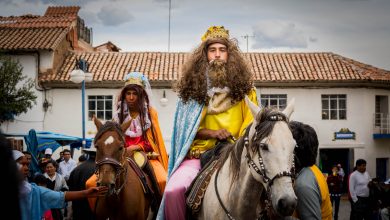Cusco’s arms are open while standing with Castillo

Cusco’s season of fiestas comes to an intense conclusion this week, precisely at the same time Peru awaits the declaration of a winner in its recent presidential election. In both the elections and the feasts, the Imperial city stands out.
Yesterday was the relatively new and also ancient celebration of an Andean and Amazonian New Year, It is new because in the last decades activists gathered together pieces of tradition and created this claim to an ancient past with new clothing.
However, the solstice was a key time among the Incas and, although celebrated on a different date, the Catholic Feast of St. John, it is the Inca—old and modern—Inti Raymi. This is the culmination of the Days of Cuzco, its epochal, municipal celebration that draws spectators from around the globe.
This year, there will be fewer visitors yet, on that day, there is an additionally important feast which will draw most of the city’s population, the huatia, the building of ovens from earth clods in which people bake potatoes and more. They gather around in in groups of families and friends to cook and eat, a basis of Andean celebration.


This multifaceted reality is a key to Cusco’s fiestas, its Andean culture, and the elections.
As an example, Cusco’s main festive dish, the chiriuchu that has been much eaten these days, is a combination of different meats and other products celebrating the coming together of many, diverse elements. In the same way, the huatia brings together different tubers and other products of the earth to bake in dirt ovens while the varied members of families, young and old, male and female, of different origins come together to cook and eat.
Another celebration, although in English we do not think of it as such, the election brought people together to cast a vote for the country’s president in a second and final round. People from all across the geographical diversity of Peru, its ethnicities and races, its social classes whether farmers, miners, industrial workers, or even billionaires placed that vote on the same day.
Although the difference between the candidates with 100% of the vote counted is a matter of some 40,000 votes, the results are being challenged. The loser, Keiko Fujimori, and her supporters reject the idea that Pedro Castillo, a rural school teacher and member of the historic left could have won. The divides become wounds with racism and accusations of ignorance and even communism.

In these days, the situation will settle. It looks probable that Castillo will be declared president despite the legal and social actions of Fujimori.
When plotted over all the many districts of the country, the vote shows a divide between the country’s south, including Cusco, and its large cities, between the farmers and workers, and the managerial or merchant classes of Lima and elsewhere.
Cusco stand out, a massive and singular stone like those that make up the face of Saqsayhuaman, a popular archeological site above the city.
Fujimori was unable to win a single district in this very large and diverse region, home of the Incas. Indeed, when she visited as candidate she was widely booed and could not hold her rally within the city.
Even in the well-off district of Wanchaq, filled with managers, business men, and governmental officials, she did not win.
Though diverse, Cusco stood solidly against Fujimori and with Castillo. I write this in the negative, because of something significant. Almost universally, Peru’s highlands, especially in the south, voted for Castillo, while the middle classes and elites of Lima and other cities supported Castillo.
This gap is not just one of economics and geography, it is one of cultural orientation.
To paraphrase Peru’s late great historian, Maria Rostroworski about Vargas Llosa, the Fujimori Peru just does not comprehend nor value the life ways and culture of the country’s poor and especially the inhabitants of its highlands. One sees this in the desperation in which they deny the vote in favor of Castillo.
Nonetheless, even Vargas Llosa and Fujimori et al could come and sit around a huatia. There is space for them within the capacious ways of Cusco. Happy Andean New Year




